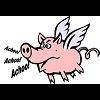Turbo Specifications
Announcements
-
Similar Content
-
Latest Posts
-
Oh this is my 1998 E39 5 series. It's worth more to me than financial value. It's a project car for me to love and work on without fear of f**king up something that has lots of value or that I need to keep running.
-
I'm super realistic here. I love the car and want to keep it but I know it's days of perfect condition are well and truly over. I just want a fix that won't come back.
-
By Murray_Calavera · Posted
All good, I'll tag myself in lol. What car are we looking at here? What is its value/sentimental value? What type of repair do you want to do, 100% perfect back to stock or are you happy just to have the rust gone? My initial thoughts are not very positive but I'll wait to see what your goals and thoughts are first before I start raining on anyone's parade. -
Hot tip, stop picking at shit. Live in bliss instead From my recent experience in rust repairs, white it may seem to not go much further back, you'll still need to cut back a bit further. From what I can see there, the outer skin, and the inner is rusted too. From what I can see you've got the inner one which is all structural, and window likely affixes too. If tag Murray Calavera here, but my phone won't let me tag him, he'd probably be able to give the best advise. I do know, welding roof panels is a right pain in the bollocks! Very heavy to heat distort the roof and warp it all.
-
Some of the filler. Also if I look under the top flap of metal it starts looking good quite close to the edge. I get the feeling it doesn't go much further.
-






Recommended Posts
Create an account or sign in to comment
You need to be a member in order to leave a comment
Create an account
Sign up for a new account in our community. It's easy!
Register a new accountSign in
Already have an account? Sign in here.
Sign In Now